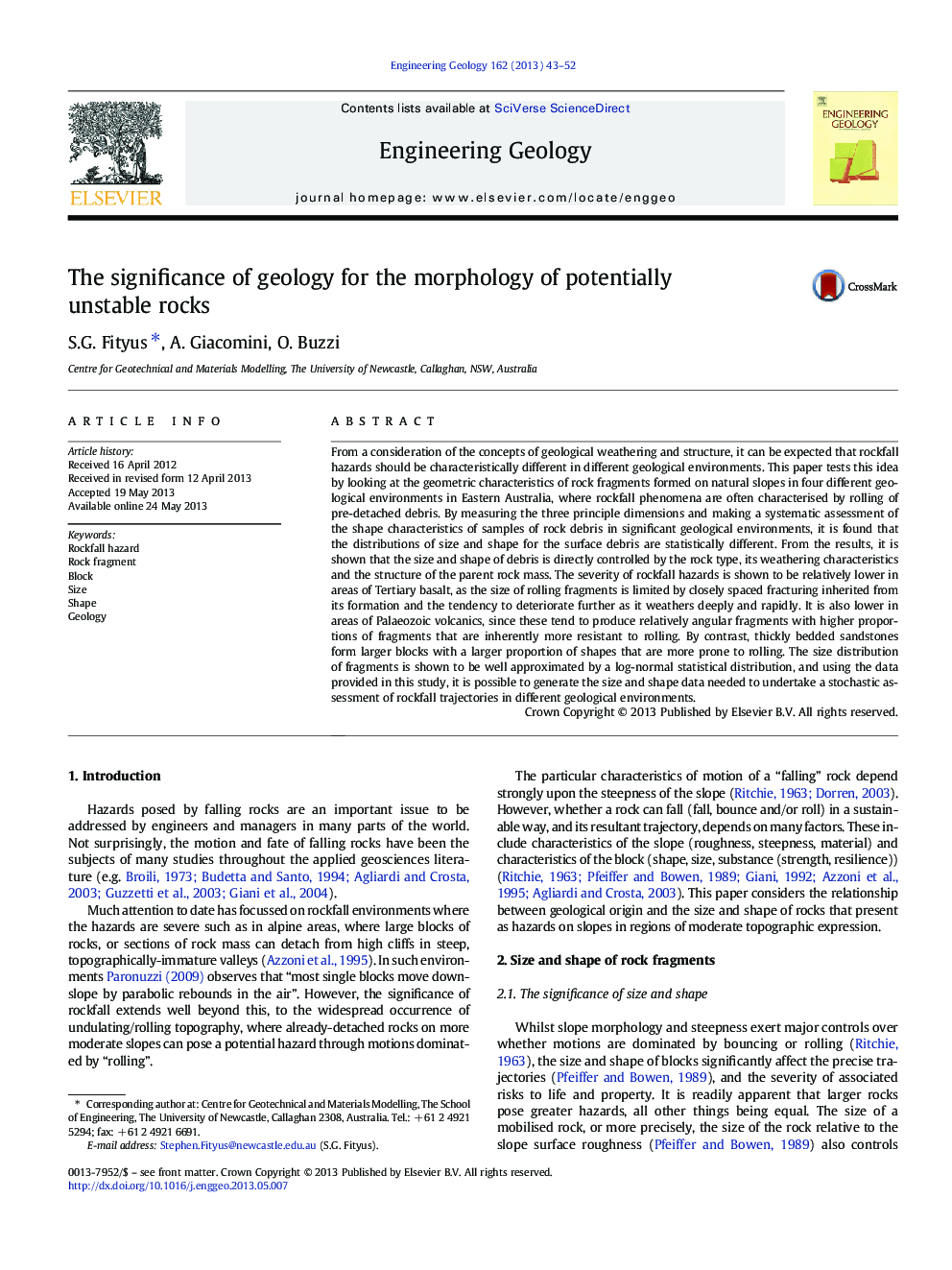| کد مقاله | کد نشریه | سال انتشار | مقاله انگلیسی | نسخه تمام متن |
|---|---|---|---|---|
| 6447969 | 1641822 | 2013 | 10 صفحه PDF | دانلود رایگان |
عنوان انگلیسی مقاله ISI
The significance of geology for the morphology of potentially unstable rocks
ترجمه فارسی عنوان
اهمیت زمین شناسی برای مورفولوژی سنگهای بالقوه ناپایدار
دانلود مقاله + سفارش ترجمه
دانلود مقاله ISI انگلیسی
رایگان برای ایرانیان
کلمات کلیدی
خطر آتش سوزی، قطعه سنگ مسدود کردن، اندازه، شکل، زمین شناسی،
ترجمه چکیده
از نظر مفاهیم هوای زمین شناسی و ساختار، می توان انتظار داشت که خطرات سنگ کش در محیط های مختلف زمین شناسی متفاوت باشد. این مقاله با در نظر گرفتن خصوصیات هندسی قطعات سنگی که در دامنه های طبیعی در چهار محیط مختلف زمین شناسی در شرق استرالیا شکل می گیرد، پدیده های سنگ کوهی اغلب توسط نوردی از آوارهای پیش از انحلال مشخص می شود. با اندازه گیری سه بعد اصلی و ایجاد یک ارزیابی سیستماتیک از ویژگی های شکل نمونه های باقیمانده سنگ در محیط های مهم زمین شناسی، مشخص شده است که توزیع اندازه و شکل برای تخریب سطحی از نظر آماری متفاوت است. از نتایج، نشان داده شده است که اندازه و شکل بقایا به طور مستقیم توسط نوع سنگ، ویژگی های هوای آن و ساختار توده سنگ اولیه کنترل می شود. نشان می دهد که شدت خطر افتادن سنگ در مناطق بازالت فوقانی نسبتا پایین است، زیرا اندازه قطعه های نورد با شکستگی نزدیک فاصله ای که از شکل گیری آن به ارث رسیده و تمایل به ادامه عمیق تر و سریع تر می شود، بدتر می شود. همچنین در مناطقی از آتشفشانهای پائئوزوئیک پایین تر است، زیرا آنها تمایل به تولید قطعات نسبتا زاویه ای دارند که دارای نسبت های بالایی از قطعات هستند که به طور ذاتی مقاوم تر به نورد هستند. در مقابل، ماسه سنگ های ضخیم پوشیده شده، بلوک های بزرگتری را تشکیل می دهند که نسبتا بزرگتر از اشکال است که بیشتر در معرض نورد قرار دارند. توزیع اندازه قطعه ها به خوبی با توزیع آماری منطقی نرمال تقریب می شود و با استفاده از داده های ارائه شده در این مطالعه می توان داده های اندازه و شکل مورد نیاز برای ارزیابی تصادفی مسیرهای سقوط در زمین های مختلف زمین شناسی محیط ها
موضوعات مرتبط
مهندسی و علوم پایه
علوم زمین و سیارات
مهندسی ژئوتکنیک و زمین شناسی مهندسی
چکیده انگلیسی
From a consideration of the concepts of geological weathering and structure, it can be expected that rockfall hazards should be characteristically different in different geological environments. This paper tests this idea by looking at the geometric characteristics of rock fragments formed on natural slopes in four different geological environments in Eastern Australia, where rockfall phenomena are often characterised by rolling of pre-detached debris. By measuring the three principle dimensions and making a systematic assessment of the shape characteristics of samples of rock debris in significant geological environments, it is found that the distributions of size and shape for the surface debris are statistically different. From the results, it is shown that the size and shape of debris is directly controlled by the rock type, its weathering characteristics and the structure of the parent rock mass. The severity of rockfall hazards is shown to be relatively lower in areas of Tertiary basalt, as the size of rolling fragments is limited by closely spaced fracturing inherited from its formation and the tendency to deteriorate further as it weathers deeply and rapidly. It is also lower in areas of Palaeozoic volcanics, since these tend to produce relatively angular fragments with higher proportions of fragments that are inherently more resistant to rolling. By contrast, thickly bedded sandstones form larger blocks with a larger proportion of shapes that are more prone to rolling. The size distribution of fragments is shown to be well approximated by a log-normal statistical distribution, and using the data provided in this study, it is possible to generate the size and shape data needed to undertake a stochastic assessment of rockfall trajectories in different geological environments.
ناشر
Database: Elsevier - ScienceDirect (ساینس دایرکت)
Journal: Engineering Geology - Volume 162, 25 July 2013, Pages 43-52
Journal: Engineering Geology - Volume 162, 25 July 2013, Pages 43-52
نویسندگان
S.G. Fityus, A. Giacomini, O. Buzzi,
